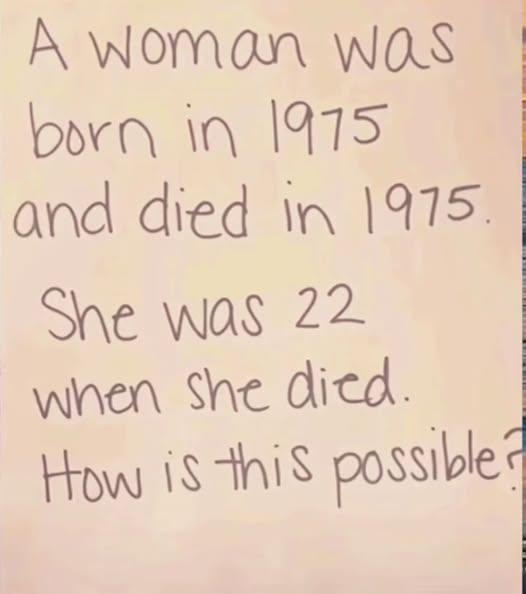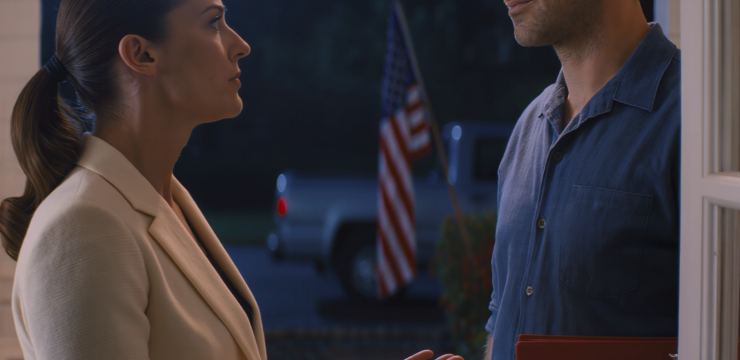Here’s a riddle that’s been driving the internet crazy: “A woman was born in 1975 and died in 1975. She was 22 years old when she died. How is this possible?” At first glance, it sounds completely illogical, even impossible. How can someone be born and die in the same year and yet have lived 22 years? Your first instinct might be to check the math or assume it’s a typo, but before jumping to conclusions, take a moment to consider a different approach.

Most people get stumped because we’re trained to think in certain patterns, especially when it comes to numbers. When we see “1975,” our brains automatically associate it with a calendar year, and that’s exactly what makes the riddle tricky. We immediately start calculating ages based on years and months, trying to figure out how someone could possibly be born and die in 1975 and still be 22. It sounds like something out of a science fiction novel—unless we pause and consider that the number 1975 may not refer to a year at all. That’s where the twist lies. Riddles often play on the assumptions we make, and this one is a classic example.
To understand the answer, we have to break free from that automatic year-based thinking. Instead of treating 1975 as a year, try to think of it as something else entirely. What if “1975” isn’t a year, but a room number? Imagine the riddle phrased like this: “A woman was born in Room 1975 and died in Room 1975. She was 22 years old when she died.” Suddenly, everything makes perfect sense. There’s no time paradox, no need to twist dates around. The woman simply entered the world and passed away in the same hospital room, or maybe in the same room of a building, and she happened to be 22 years old at the time of her death.
The number “1975” becomes a label, not a timestamp. This riddle cleverly uses our mental habits against us. It’s a bait-and-switch designed to trick the mind into jumping to a common conclusion, only to reveal that we were looking at it the wrong way the whole time. That’s what makes it fun, and frustrating, all at once. The challenge isn’t mathematical—it’s perceptual. It reminds us that sometimes, the biggest barrier to solving a problem is our own way of thinking. The most common mistake people make with this riddle is assuming 1975 has to refer to a year. Once that assumption is in place, the brain scrambles to find ways to justify how someone could be 22 years old in the same year they were born and died. But as soon as you strip away that assumption, the answer becomes incredibly clear and simple.
This kind of riddle teaches us a valuable lesson about how we interpret information. It’s not just about facts and numbers—it’s about how we process them, how we fill in the blanks, and how we let our past experiences shape our understanding of new information. In daily life, just like in this riddle, we often make assumptions without even realizing it. So next time you come across a problem that seems impossible to solve, take a step back and ask yourself: Am I making any assumptions that I need to challenge? Am I looking at this the only way I know how, or is there another angle I haven’t considered? Try this riddle out on your friends or coworkers and see how they respond. Most people will be just as confused at first, and you’ll get to enjoy the moment when they finally see the twist. It’s not just a fun brain teaser—it’s a reminder that curiosity and flexible thinking are key to solving many of life’s puzzles. And if something as simple as a number like “1975” can completely flip your perspective, imagine what other things you might be seeing from only one angle. The best part about riddles like this is that they keep our minds sharp and remind us not to take everything at face value. Keep questioning, keep exploring, and always remember—sometimes, the trick isn’t in the numbers, but in how we choose to see them.





